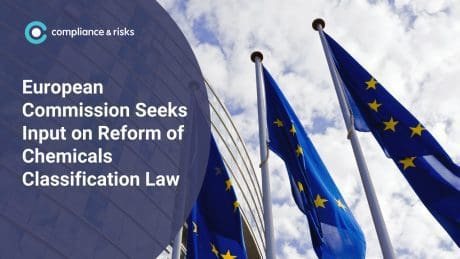
Status of Proposed Cobalt Restriction under REACH


These five substances are already classified as REACH Substances of Very High Concern (SVHC) as they are category 1B carcinogens. The proposed restriction does not appear to be a full ban as these can be used under certain specifically controlled use conditions, according to the draft proposed restriction. This introduces a new concept, the “Reference Exposure Level” where manufacturers must demonstrate that workers are exposed to cobalt levels of less than 0.01µg/m3. Cobalt already has an occupational exposure limit in the EU of 0.1µg/m3 so this new limit is 10 times lower than the current limit. There is an issue, however, in that measurement of cobalt in the air at 0.01µg/m3 is technically very challenging and may not be possible such that this requirement may not practically be monitored by employers or enforced by market surveillance authorities.
Examples of uses of these cobalt compounds include:
- Manufacturer of lithium-ion batteries
- Electroplating, including hard chrome substitutes (hard chrome uses hexavalent chromium salts)
- Production of catalysts used for desulphurisation of oil and to synthesise terephthalic acid, the precursor for PET and other plastics
- Production of pigments
- Passivation treatments – cobalt salts are added to trivalent chromium passivation processes that replace hexavalent chromium passivation (the latter are already subject to Annex XIV authorization)
- Biotechnology where it is essential in cell culture media used for fermentation processes.
At present, there are no plans to restrict other cobalt compounds or cobalt metal. However, the European Chemicals Agency (ECHA) is reviewing the hazard classification of cobalt metal and water-insoluble cobalt compounds such as the oxide and could assign a harmonized classification that includes 1B carcinogen (this is at present under consideration and is by no means certain to be the outcome). If this were to occur, cobalt metal and compounds would become eligible to be REACH SVHCs and restriction may also be considered. Cobalt metal is used, for example, in electroplated coatings, in superalloys, hard and special steels and magnets.
ECHA is carrying out a stakeholder consultation on the restriction proposals which closes 19th June 2019.
One surprising aspect of these efforts to restrict cobalt compounds is that there is no similar effort on nickel compounds. Many nickel compounds are classified as category 1A carcinogens so are potentially more hazardous than cobalt compounds, which are 1B. Nickel compounds are also very widely used and the water soluble compounds have same occupational exposure limit as cobalt compounds in the EU.








